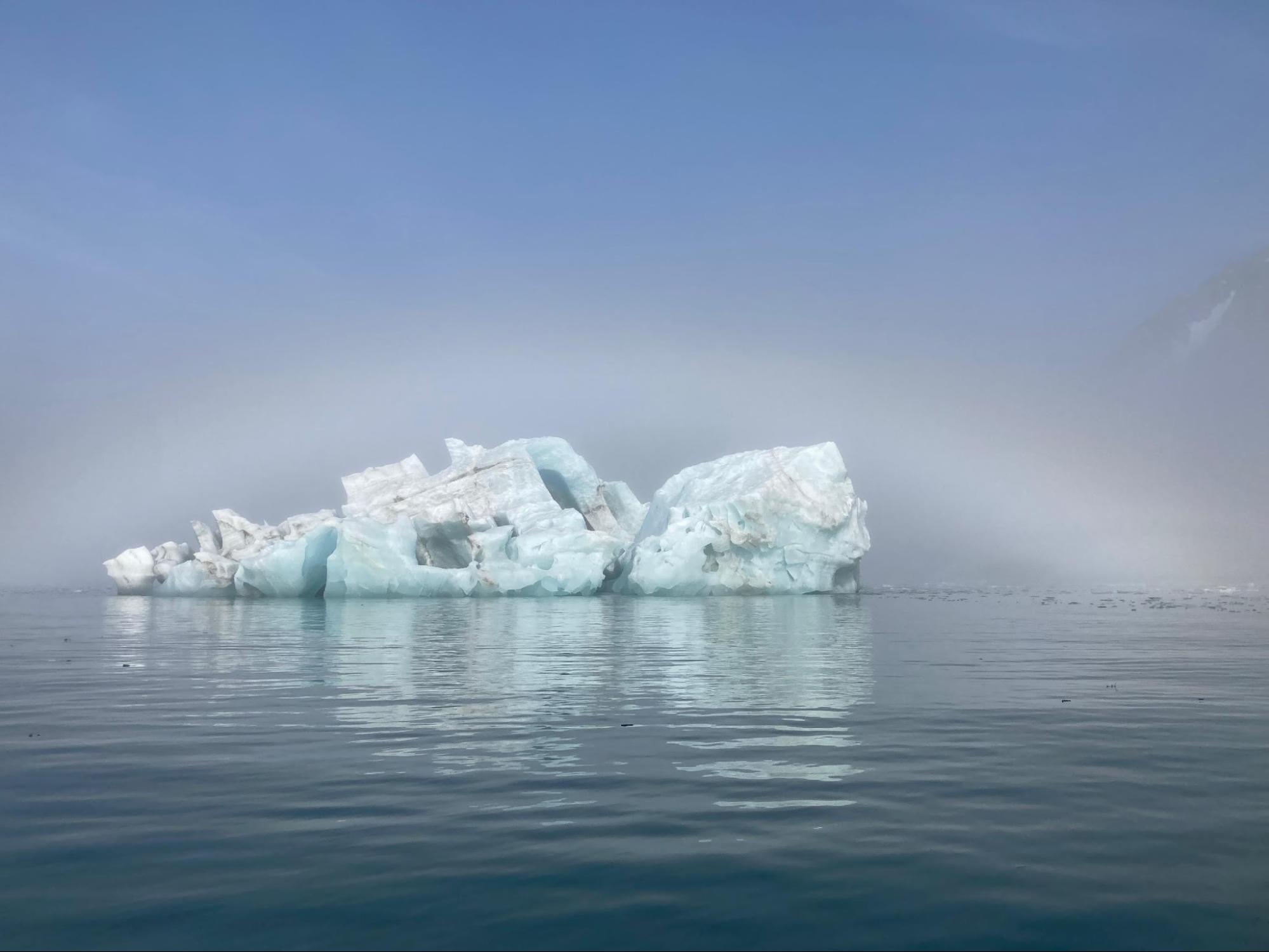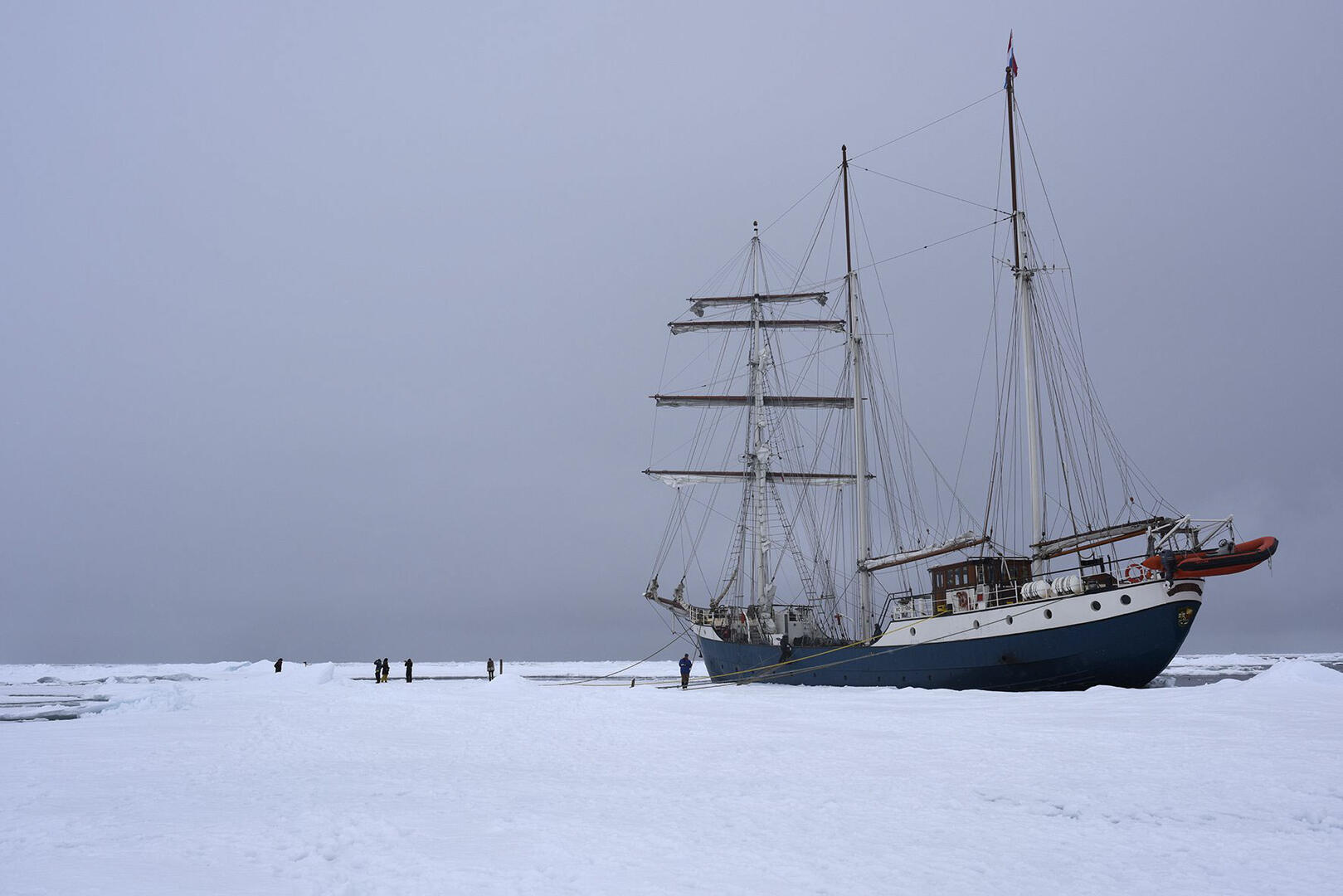
This past June, Assistant Arts Professor of Visual Arts Professor Maya Kramer flew to Longyearbyen, the world’s northernmost human settlement, to fulfill a longstanding goal of participating in the Arctic Circle Residency. During the two-week expedition, 30 professionals, including composers, artists, political scientists and environmental historians, sailed around the Svalbard archipelago conducting research for their respective projects. Professor Kramer reflects on the contradictions, camaraderie, and beauty she experienced as well as the work she is creating based on her experience.
What motivated you to go to the Arctic Circle?
I’ve been creating sculptures and installations that explore the relationship between humans, ‘landscape’ and ‘nature’ in the age of the Anthropocene for close to twenty years now. Of course, the arctic is a critical space for that dialogue. I heard about this residency in 2009’ from one of the first participants and I was keen on going. However, it wasn’t until I started at NYUSH full time that I had the research and additional support from the Shanghai Key Laboratory Of Urban Design and Urban Science (LOUD) at NYU Shanghai, ICA, and NYU Shanghai’s Office of Research to make the trip happen.
 A fogbow appeared over an iceberg, looking like a white rainbow. Photo credit: Maya Kramer
A fogbow appeared over an iceberg, looking like a white rainbow. Photo credit: Maya Kramer
What was traveling in the Arctic like?
It was one of the most profound experiences of my life. From the way the main town of Longyearbyen crystallizes many of the contradictions and challenges of the Anthropocene, to the camaraderie and exchanges with the crew, guides and fellow participants on the ship, to the stunning beauty of the landscape along with a palpable sense of geological time evident there.
Unlike other arctic regions, Svalbard has never had an indigenous population and much of the human interaction with the region is centered around resource extraction– first whales and later coal. Now, the economy is built on tourism and climate change research, and yet those who reside in Longyearbyen have among the highest carbon footprints on earth. What’s more, the area is warming faster than other regions. Most of us feel the urgency, contradictions and challenges around climate issues, but there it was quite acute.
 Residents traveled aboard the Antiqua through the waters of the archipelago of Svalbard for 14 days. Photo credit: The Arctic Residency
Residents traveled aboard the Antiqua through the waters of the archipelago of Svalbard for 14 days. Photo credit: The Arctic Residency
What is it like to carry out research in the Arctic?
Once we boarded the ship, the magnificence and particularities of the landscape made for a novel experience. The sense of time and space are distinct there. Scale-wise, there are either massive mountains and glaciers or small rocks and delicate flora- with few human- sized elements in between. The midnight sun is surprisingly impactful, as it scrambles one’s rhythms and makes time feel protracted and sometimes still. Yet, weather and the terrain are quite unpredictable- so there are also rapid changes. I became acutely aware of my sensory operating system in a way I rarely have before– which is fantastic for an artist.
One thing that struck me was the sense of deep geological time. Towards the end of our journey, environmental historian Phil Garone, reflected, “I always wanted to visit the Pleistocene Era, and now I feel I have.” That rang true for me. The generally inhospitable nature of the landscape means that there is little evidence of humans. What’s more, Svalbard is incredibly rich geologically and contains rock types from almost every period from our planet’s history. With little vegetation or forest cover (there are actually polar willows that grow, but they only grow between 2-5cm high), these variations in the rock are literally in your face. I became more aware of longer time spans embedded in them–temporalities that stretch well beyond our human realm. The richness of the dialogue with other participants also exceeded my expectations. We were often working- drawing, photographing, capturing drone footage, sharing excerpts of texts and poems with one another, exchanging book recommendations, or interviewing one another. There was a projector in the dining galley and we gave presentations on our work (some presentations occurred while the ship was in motion and folks would struggle to stave off sea sickness!). Having such diverse and thoughtful conversations heightened an already peak experience. NYU Political Science Professor Eric Dickson was also on board and we have since become quite close.
 Maya Kramer and NYU Political Science Professor Eric Dickson, who also participated in the residency. Photo Credit: Eric Dickson
Maya Kramer and NYU Political Science Professor Eric Dickson, who also participated in the residency. Photo Credit: Eric Dickson
How has your trip inspired your creative practice?
It is both exciting and intimidating to make art from this experience. During our last full day in Longyearbyen, our guide took us beyond the city limits of Longyearbyen to collect 50 million-year-old fossils. The project I’m working on now is inspired by those fossils and also a type of rock I encountered there called ‘bread rock’. These particular rocks, after being subjected to years of geological pressure, split into sections, much like a loaf of sliced bread, yet the sections fit back together to create the whole rock.
I am making a ‘rock book’ that intersperses elements of human time, resource extraction, and climate change data from the Svalbard region with fossils and other evidence of the longer history of the planet. I will cast a rock into sections, and then on each section I will print fragments of text, fossil patterns, and images. At the moment, I am doing a number of material tests in the studio and it is technically challenging on multiple fronts. The end result will resemble an ordinary rock on the outside, but you’ll be able to open its different sections to explore all its hidden pages.

